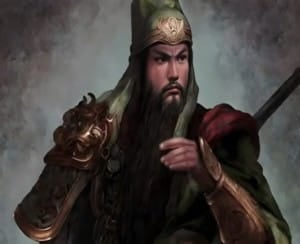
The Heavenly Emperor
A): The complete blessings and cultivation inheritance of the Jade Emperor (Yu Huang)
Information on the Jade Emperor
(B): An alchemical revision of the user’s Bazi based on an improved version of Qin Shi Huang’s (which also fixes negative aspects such as the lack of longevity he sought after)
Information on Shi Huang Di
(C): Imbuing the user with the essence of the legendary Qilin
Information on the Qilin
2: Beyond life
(A): The ripe, specific sub-type of the peach of immortality which blooms every nine thousand years and grants the user the longevity of the sun and the moon, the eternity of heaven and earth.
Information on Peaches
(B): An alchemical revision/reconstruction of the user’s physical body into the idealized version/blueprint (concept) of what a Zhen Ren (真人)(Perfected Person) is like.
Zhen Ren
(C): Invites the user to use the Silver Bridge in the Chinese Pantheon after death to join the ranks of heavenly officials/immortals under the Jade Emperor.
The Silver Bridge
3: Blessed by the Heavens
(A): Tai Sui pacification ritual (nullifies all negative astrological effects and amplifies the positive)
[details=”Tai Sui’]
Tai Sui is a Chinese term for the stars directly opposite the planet Jupiter (木星 Mùxīng) during its roughly 12-year orbital cycle. Personified as deities, they are important features of Chinese astrology, Feng Shui, Taoism, and Chinese Buddhism to a lesser extent.
The 12 signs of the Chinese zodiac are based on divisions of the Jovian orbital cycle, rather than—as with the western zodiac—the apparent motion of the sun relative to the celestial sphere. The star thought to oppose Jupiter during each year of the cycle was personified as a Heavenly General (zh:甲子神列表) or Cycle God. These were believed to assist the Jade Emperor in controlling the mortal world.
In the Warring States period, Tai Sui had become gods in the popular astronomy, but there is no record of worshiping the Tai Sui in the documents before the Han dynasty, with the earliest record found in Wang Chong’s Lunheng. There are several legends related to it, usually about people disrespecting or ignoring Tai Sui and suffering disaster.
Their number was later quintupled to sixty, based on the combinations of the twelve divisions (reckoned using the earthly stems) with the five Chinese elements of fire, earth, metal, water, and wood. Each of the gods’ features and attributes signifies the well-being of that year. For example, if the Tai Sui of the year holds a pen, it signifies political unrest for that particular year. On the other hand, if the Tai Sui of the year holds a Spear or Sword, it signifies the need to work hard and excel for that year.
Yin Jiao is the leader of those sixty Taisui Xingjun gods. Yin Jiao doesn’t govern any year in the 60-year cycle, and every year is governed by one of the 60 subordinate Taisui. Yin Jiao in particular is referred to in this context as Taisui Tongling Yin Yuanshuai (Commander of Tai Sui General Yin). In Japan and Japanese folklore however, “Taisui Xingjun” is considered a singular god.
In Taoism, those whose birth sign or other features clash with the Tai Sui of the year will face misfortunes or disturbances for the whole current year. Each year, this applies to people born under four out of the twelve animal zodiac signs. In 2017, for example, it applied to people born in the years of the Rat, Rabbit, Horse and Rooster. In Taiwan, people will go to the temples at the beginning of the Lunar Year, seeking protection and peace while driving away the negative impacts. The ritual or ceremony is known as “An Tai Sui” or pacifying the Tai Sui of the Year. In return, worshipers will receive a protective talisman from the temple which will give the person for one year’s spiritual protection.

